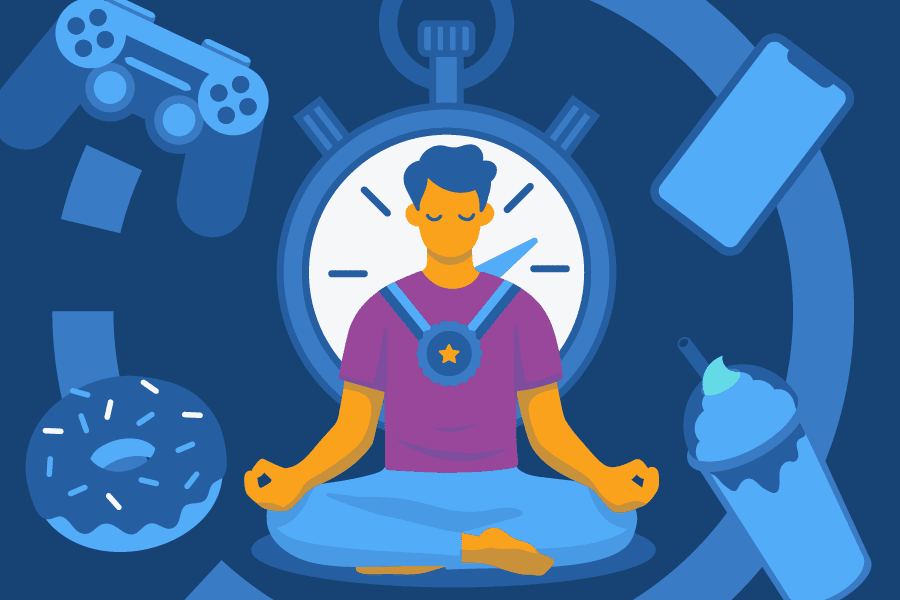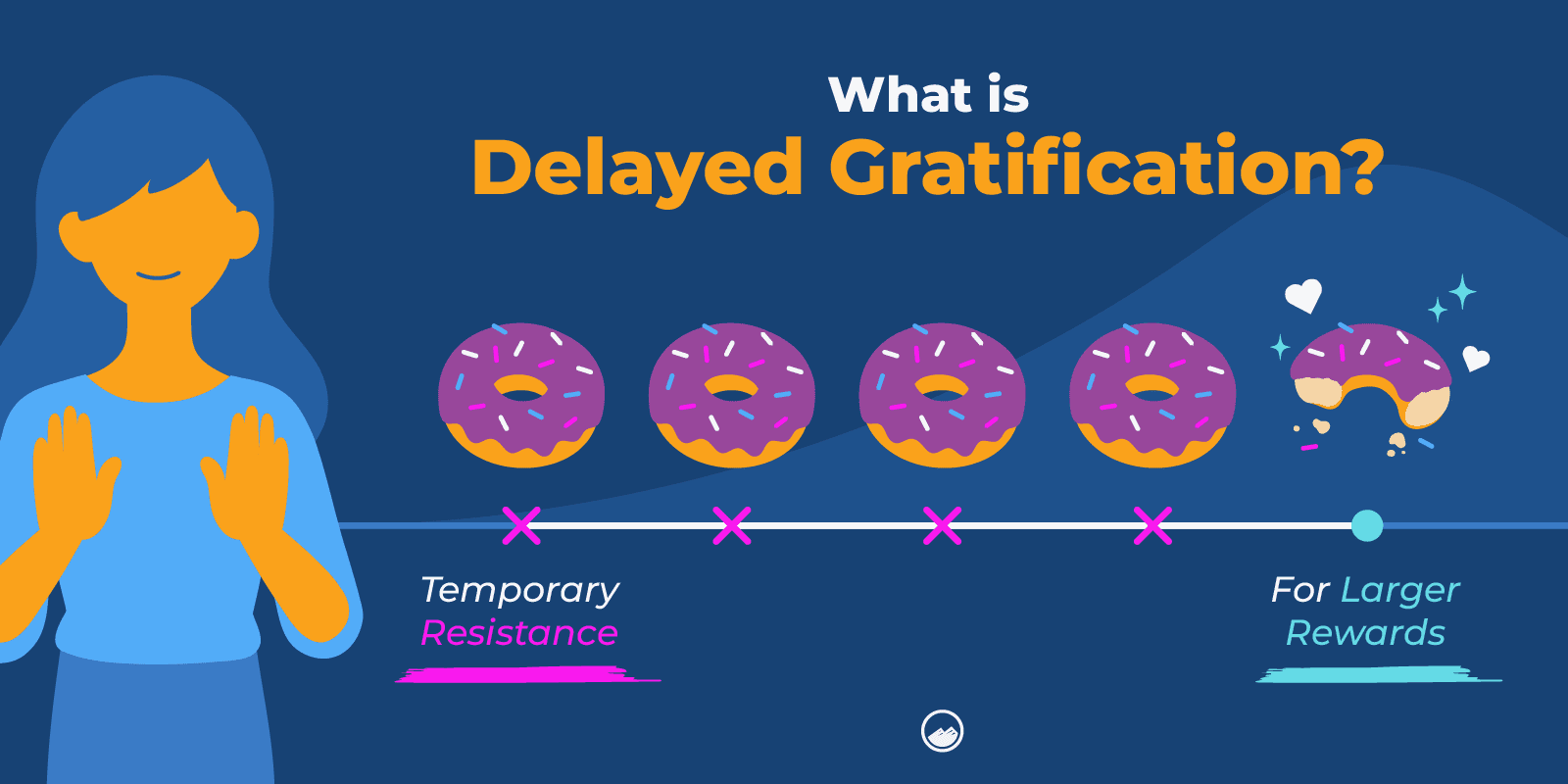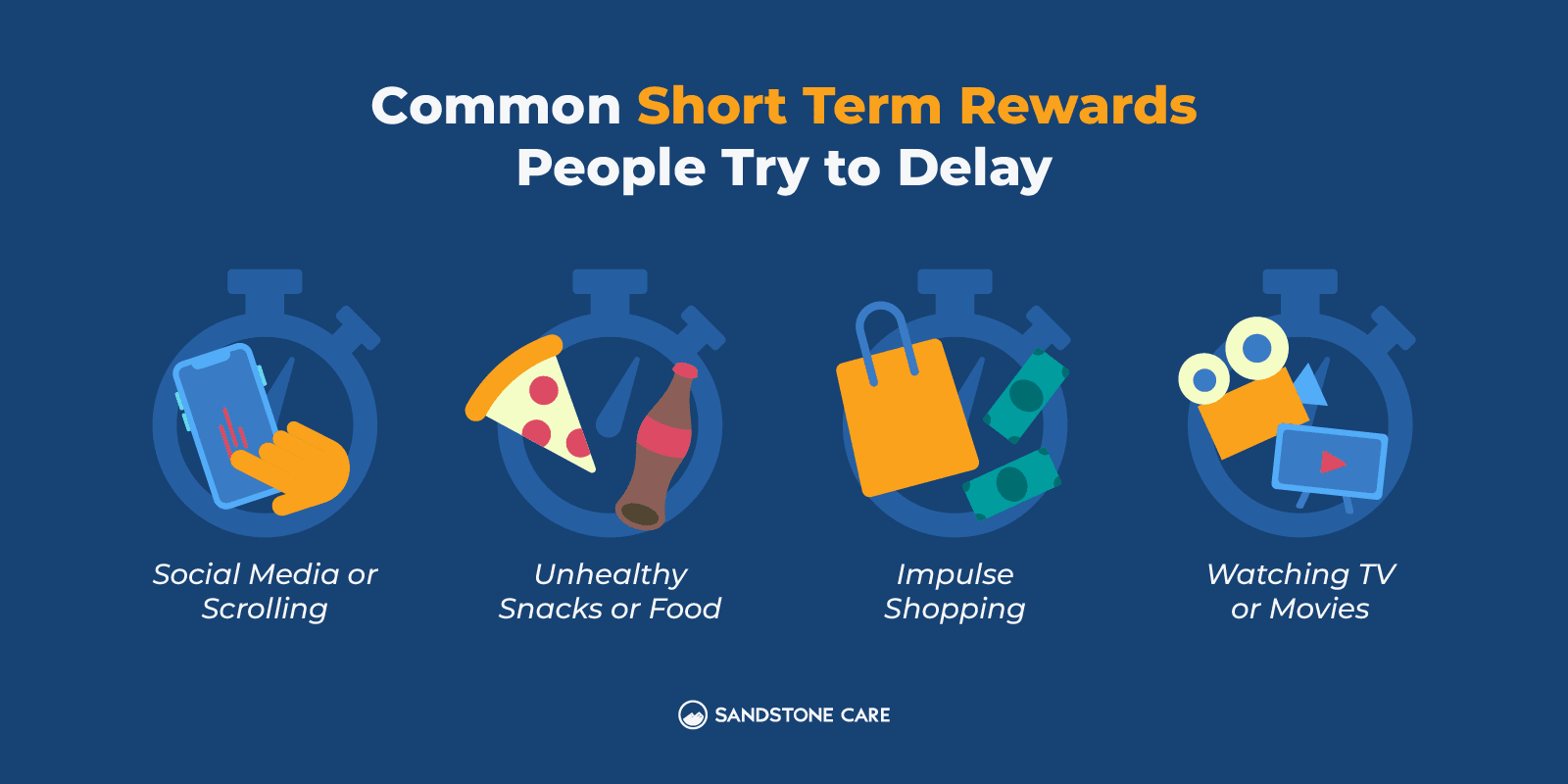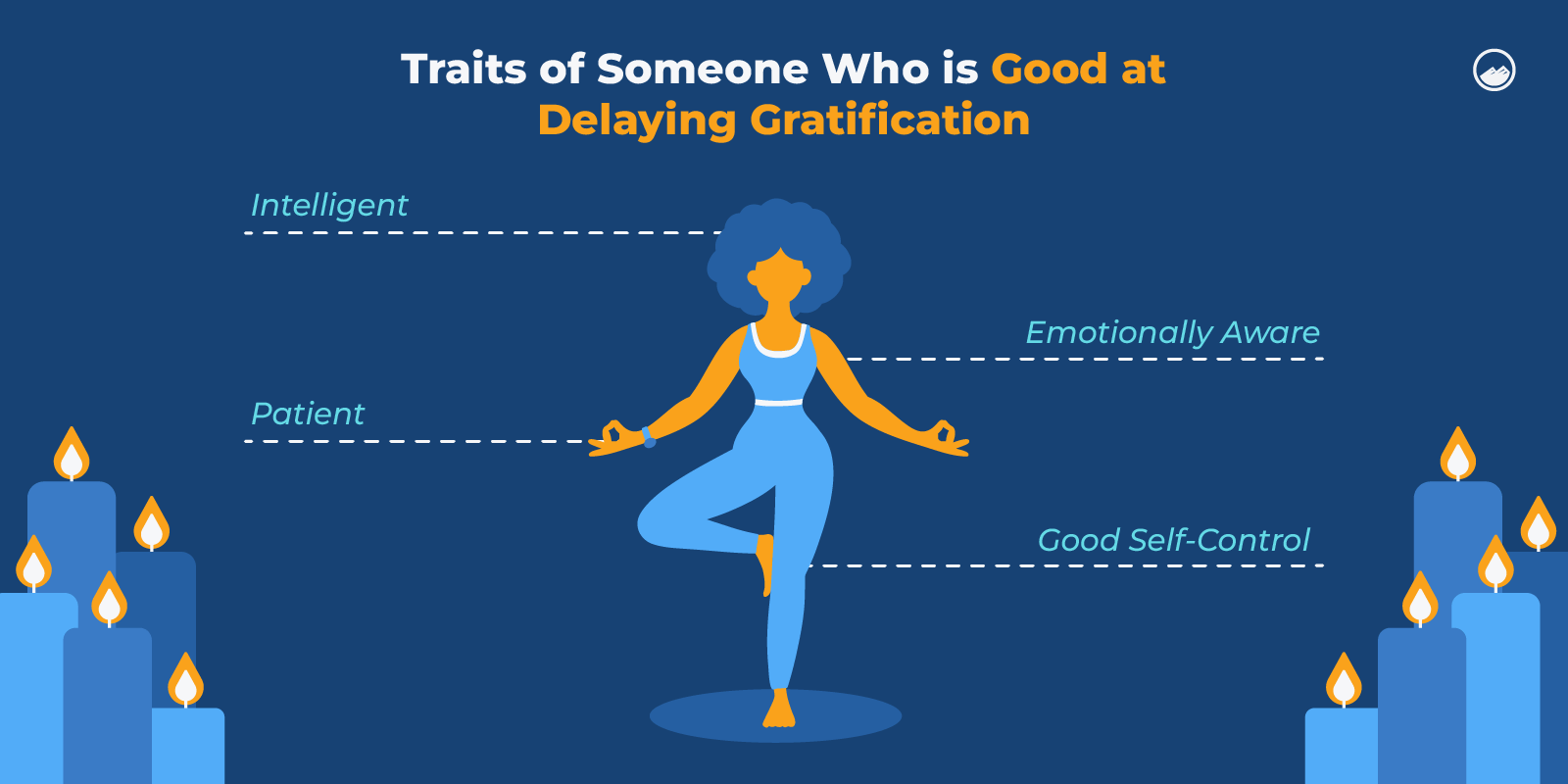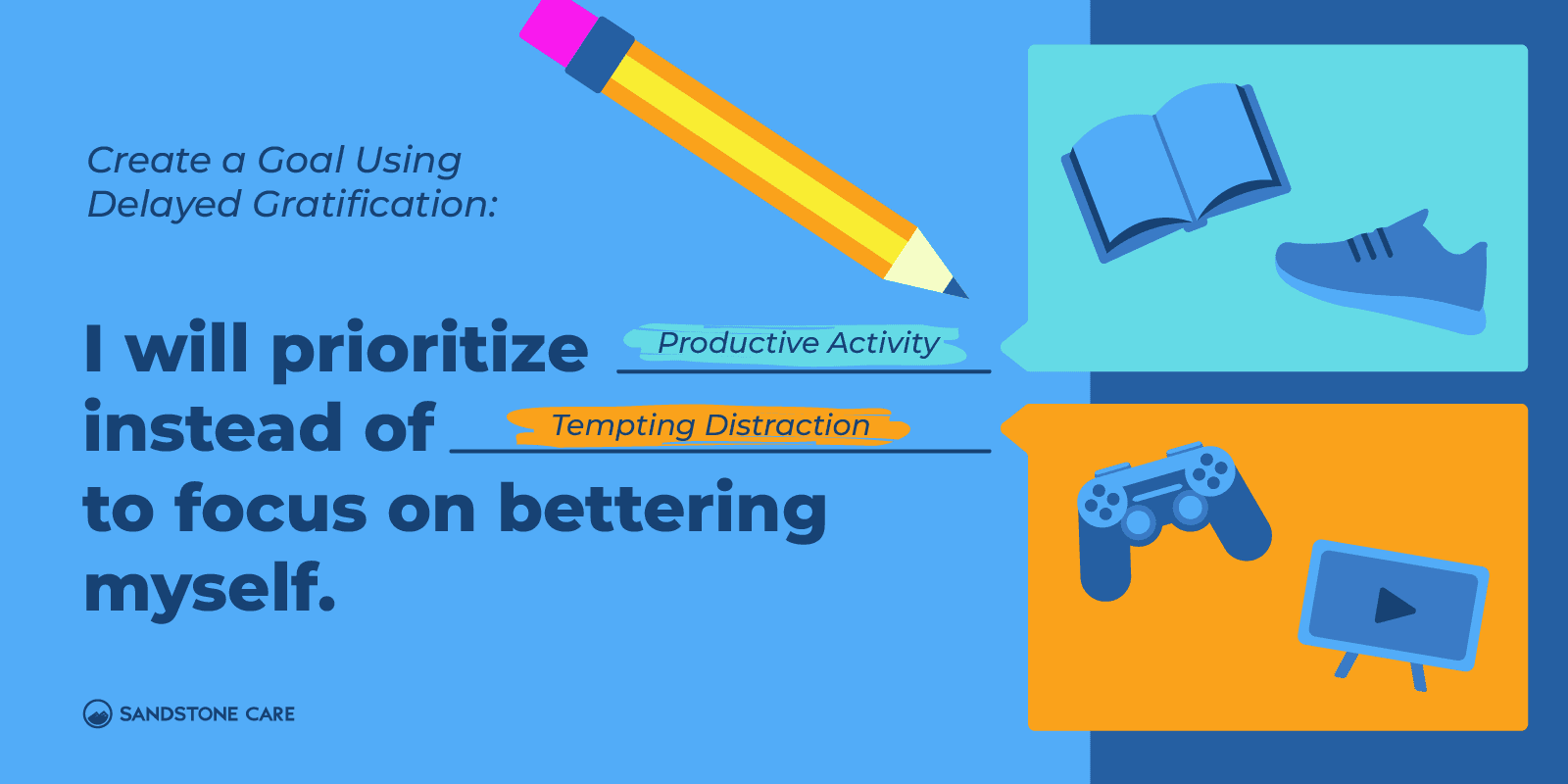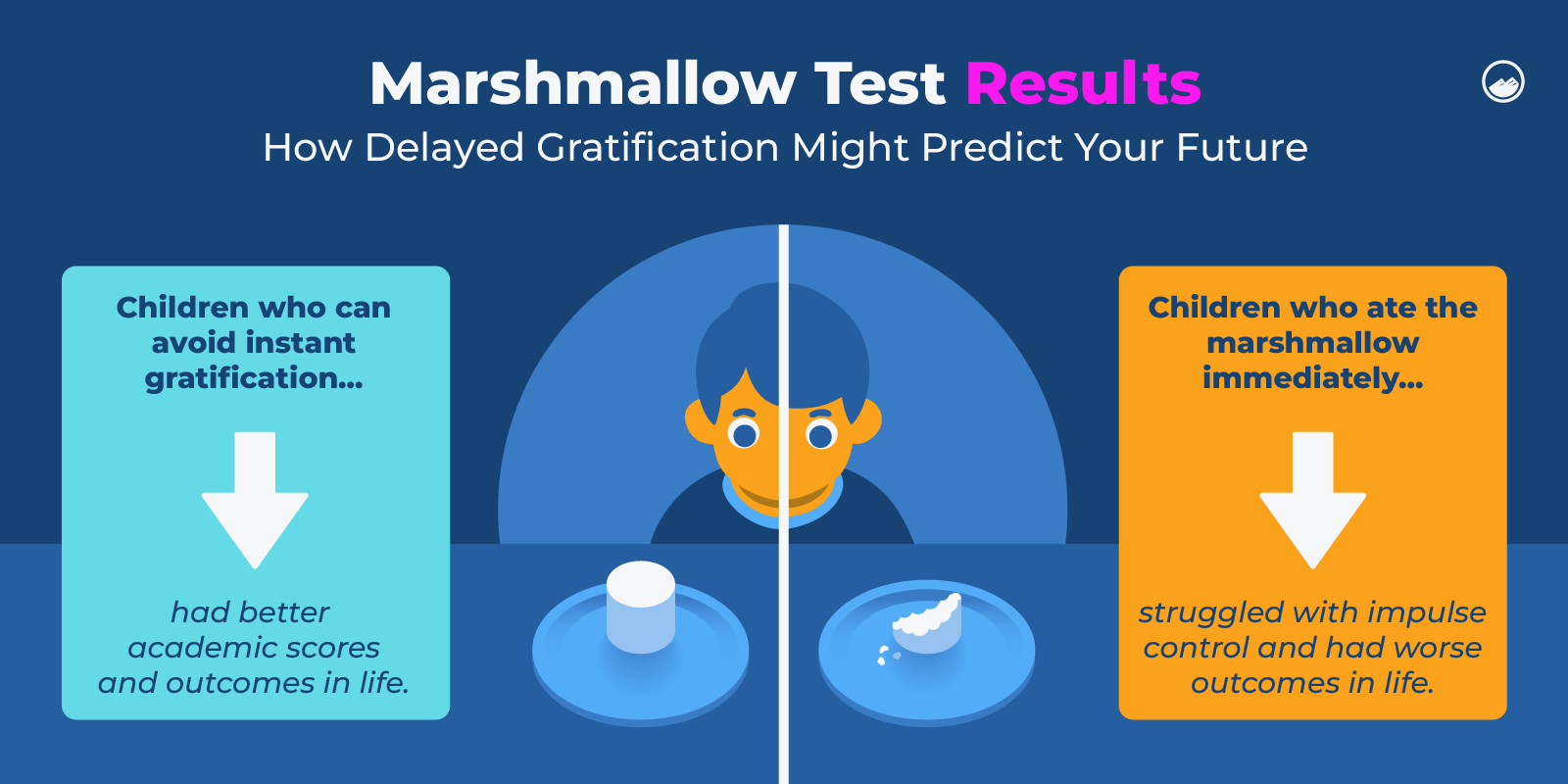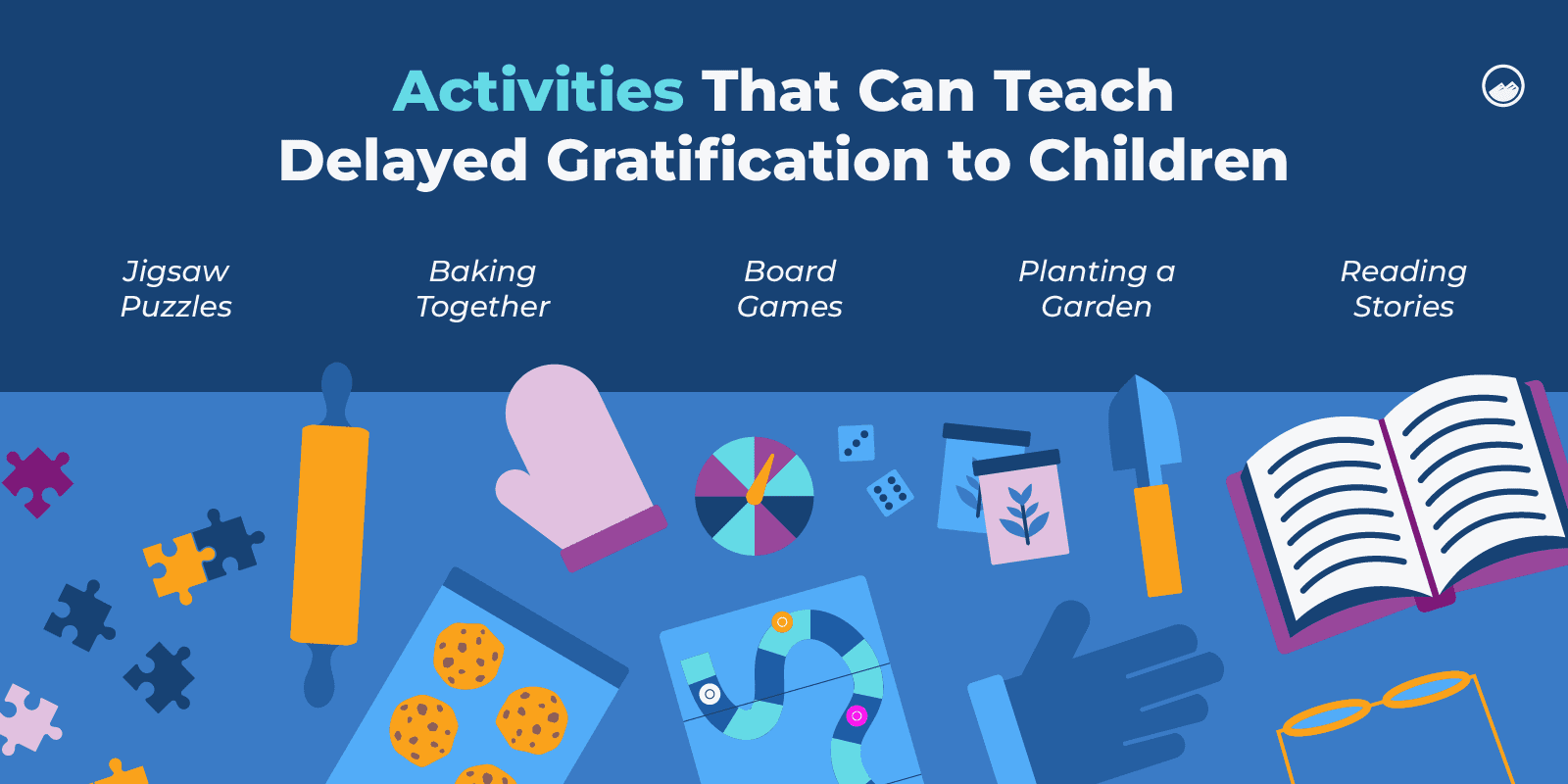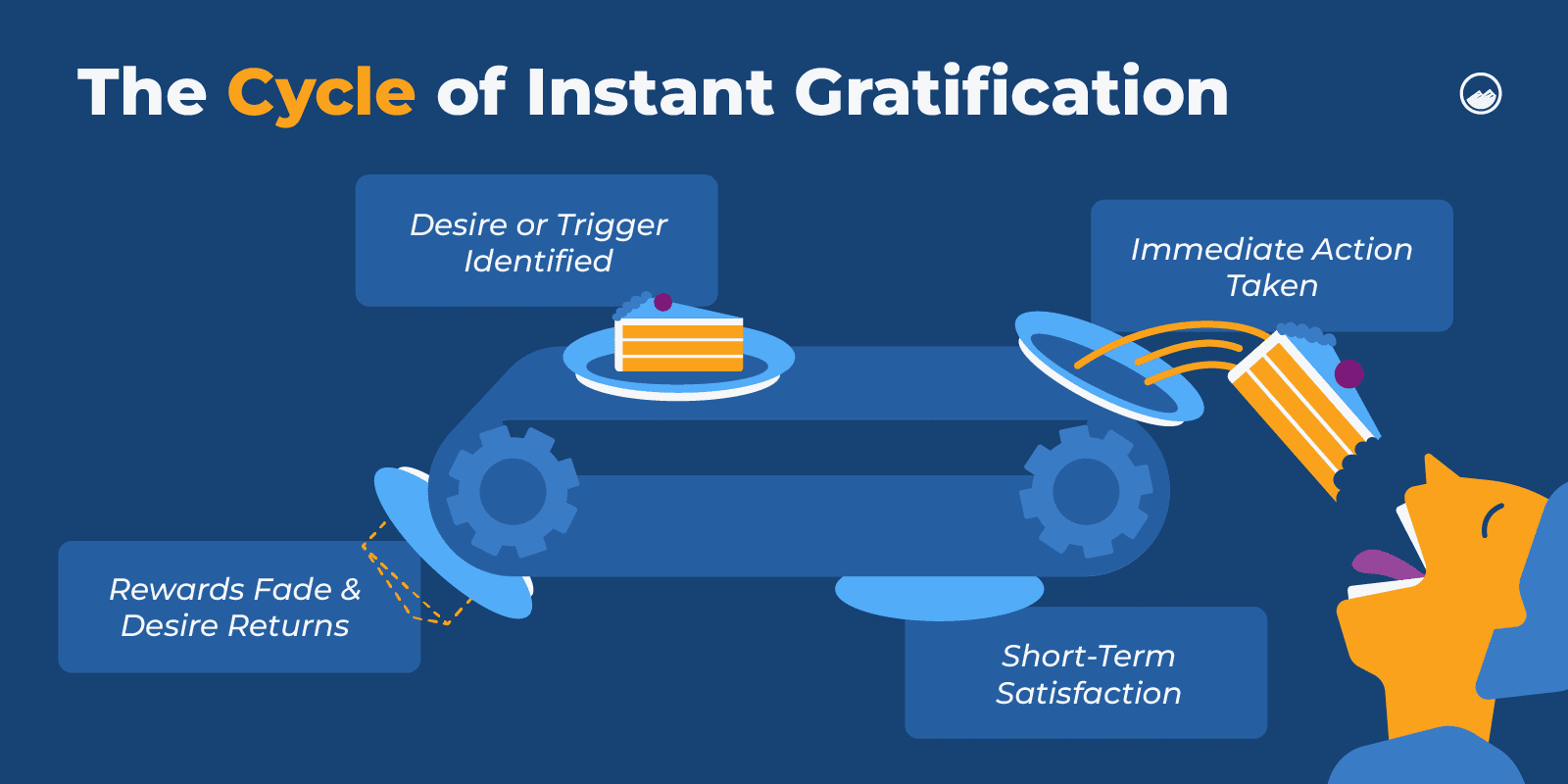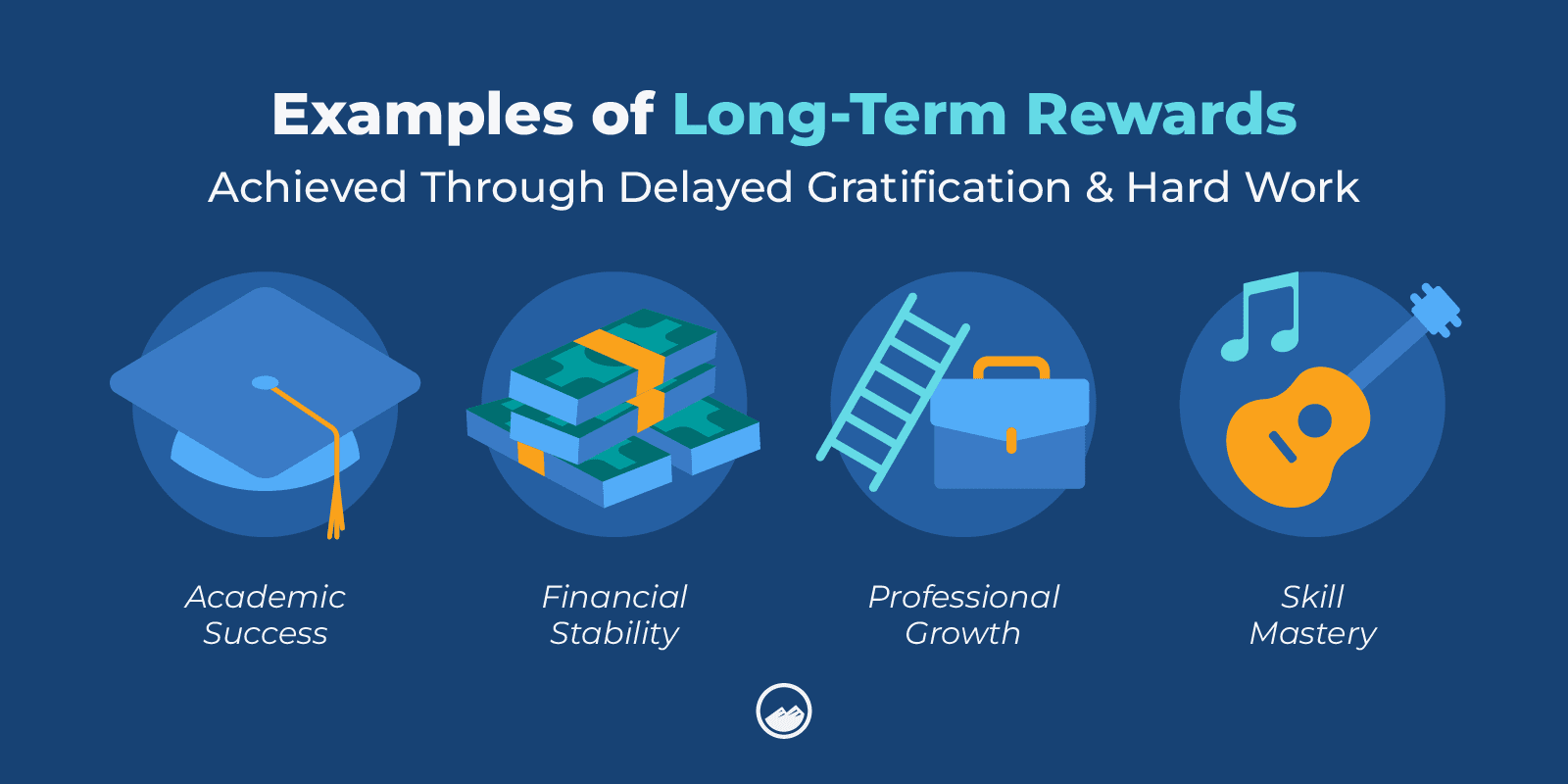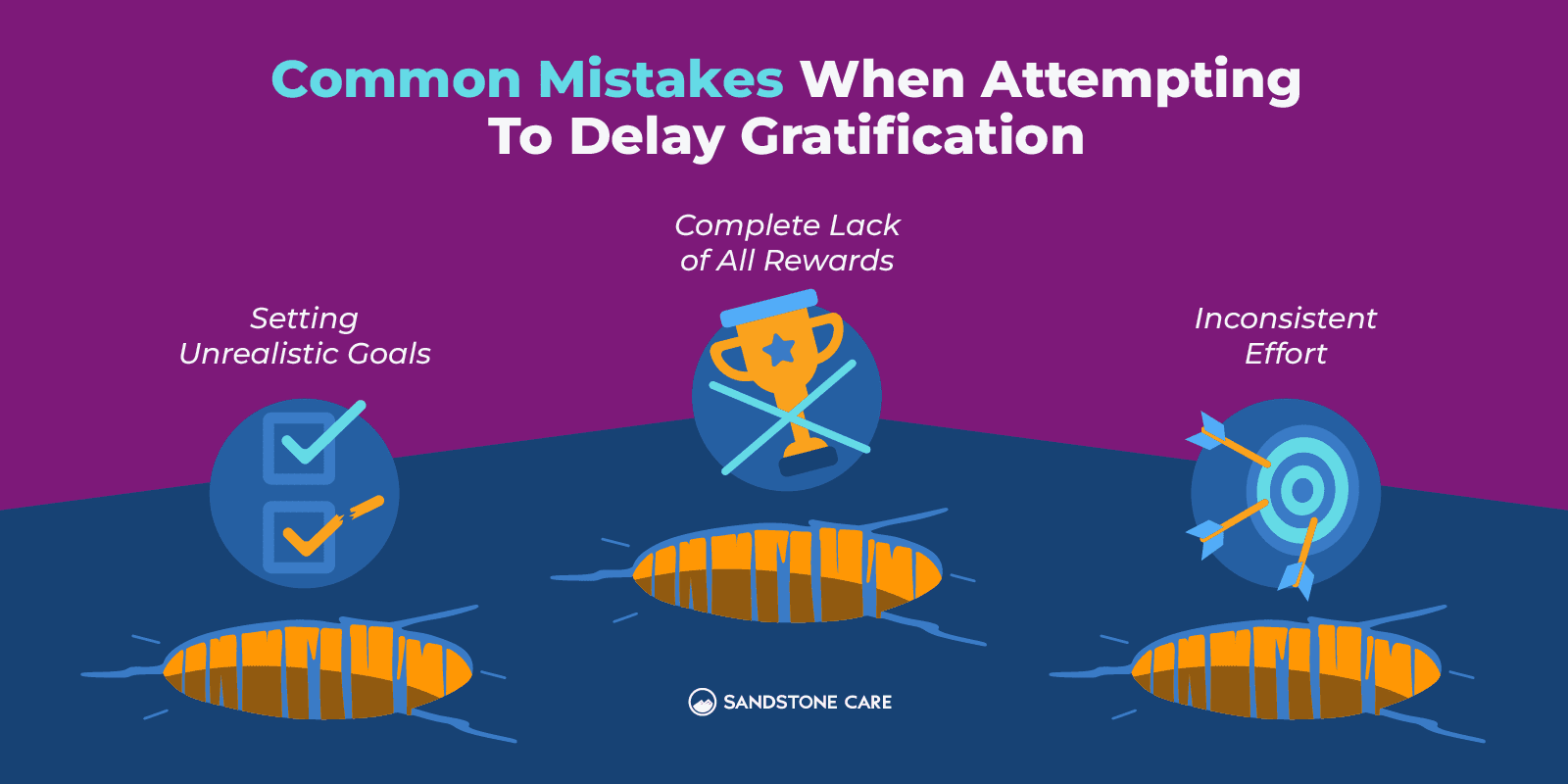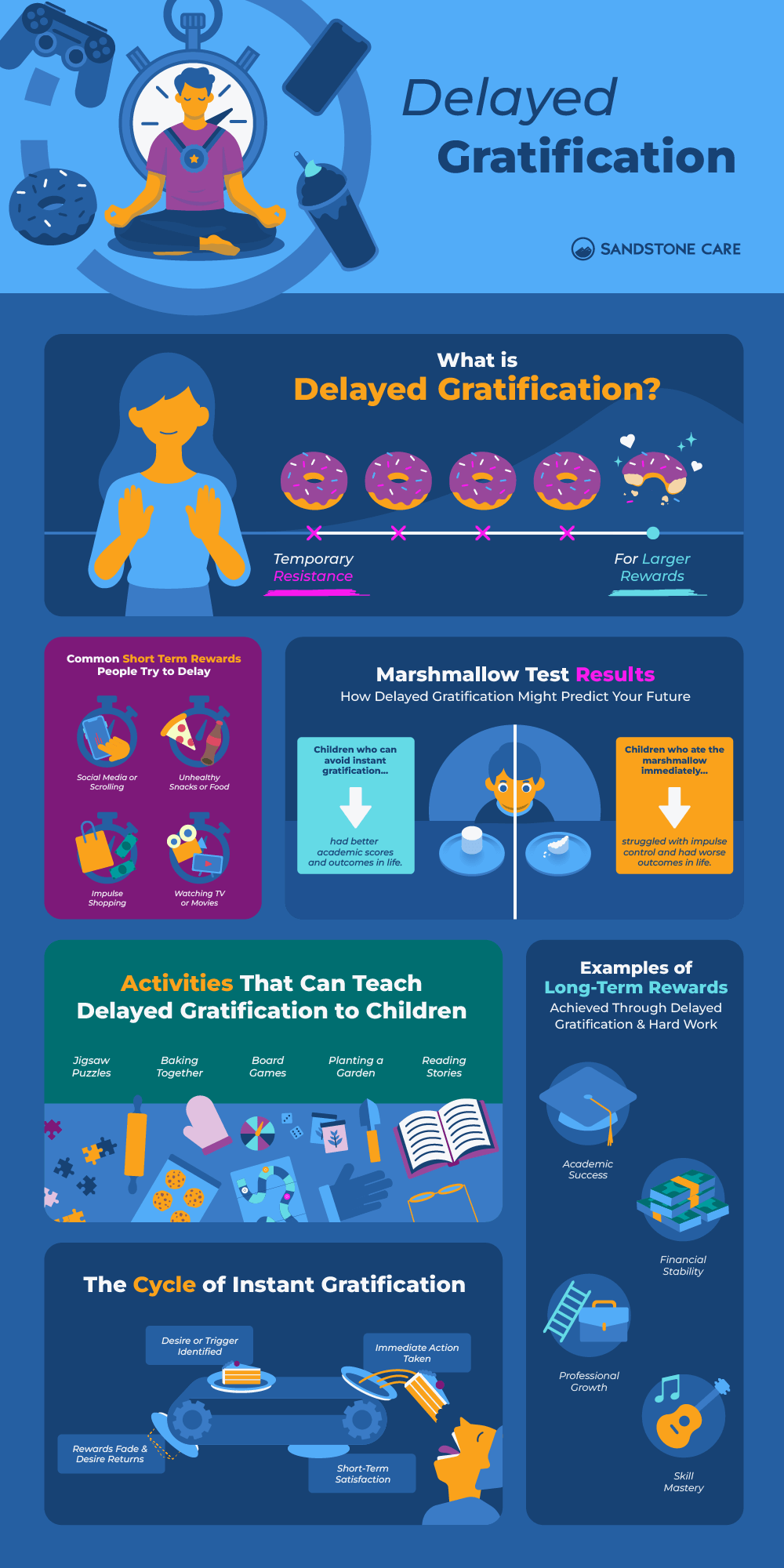Delaying Gratification Meaning
What Is Delayed Gratification?
Delayed gratification is the resistance to the temptation of immediate reward or pleasure as a way to try and achieve a larger or longer-lasting reward.
What Does It Mean to Have Trouble Delaying Gratification?
When a person has trouble delaying gratification, they often seek or settle for short-term rewards that give them satisfaction in the moment.
Having trouble delaying gratification could mean that someone acts on their impulses. For them, resisting urges may feel impossible, and they may give in immediately.
Is Delayed Gratification Good?
Delayed gratification can help people improve their self-control and achieve their long-term goals.
However, in some cases, delayed gratification can lead to a loss of motivation or cause a person to miss out on some good immediate experiences.
The healthiest relationship to have with gratification is a balance between putting off immediate desires for long-term goals and accepting short-term pleasures when it is appropriate.
Can Delayed Gratification Be Learned?
Yes, delayed gratification can be taught and learned, whether it is a child, adolescent, or adult.
Delayed Gratification Psychology
Which Part of the Brain Controls Delayed Gratification?
According to neuroscience research, the areas of the brain that are associated with delayed gratification include the nucleus accumbens, as well as areas of the prefrontal cortex and parietal cortex.
What Hormone Is Responsible for Delayed Gratification?
When a person experiences instant gratification and gives in to their desires, that immediate pleasure gives them a boost of “feel-good” hormones, like dopamine.
Oxytocin is another natural hormone that contributes to positive feelings.
Psychological science studies connect the role of oxytocin in decision-making and delay of gratification.
Is Delayed Gratification Nature or Nurture?
Delayed gratification has to do with both natural ability and one’s environment and what they are taught.
How Does Delayed Gratification Relate to Emotional Intelligence?
If a person has difficulty managing their emotions, they might give in to instant gratification to cope and make themselves feel better.
Emotional Intelligence is described as one’s “ability to perceive, express, understand, and manage emotions,” according to Healthcare.
On the other hand, when a person can understand and manage their emotions, they can block urges and stay focused on the long-term reward rather than trying to satisfy their needs immediately.
Delayed Gratification Examples
What Is an Example of Delayed Gratification?
An example of delayed gratification could be when a person chooses to resist the temptation to scroll on social media and get their homework done instead.
The delayed gratification is the goal and satisfaction they would achieve from getting good grades or doing well in school, rather than the instant pleasure of scrolling on social media.
Is Delayed Gratification Procrastination?
Immediate gratification can be a big reason why a person procrastinates.
They seek these short-term rewards and want to be rewarded immediately. Once they achieve this, they may not set out to achieve the long-term goals they were working for.
The short-term rewards that one gains from immediate gratification cause them to put off or discount greater rewards by settling for the immediate satisfaction that often wears off until they seek a short-term reward again.
Delay of Gratification Marshmallow Test
What Is the Marshmallow Challenge Delayed Gratification?
The marshmallow test was an experiment conducted by psychologist Walter Mischel to analyze a child’s ability to delay gratification, restrain impulsivity, and regulate emotion to achieve a greater reward.
In the Stanford marshmallow test, preschoolers were left in a room with a marshmallow for around 15 minutes. Before they were left alone, they were told that if they waited, they would get rewarded with a second marshmallow.
So, instead of snacking on the one they got in front of them, they would get a greater reward of two marshmallows.
The experiment claimed that the children who successfully resisted the marshmallow during that 15 minute test went on to be more successful financially and emotionally.
Which Question Was Central to the Marshmallow Test?
The question that was central to the marshmallow test was: how well can a child resist temptation and what does that imply about their future?
What Were the Results of the Marshmallow Test
In the marshmallow experiment, some kids ate the marshmallow right away. Others waited for a little but gave into temptation before the 15 minutes were up. However, some children did wait the whole 15 minutes to gain the greater reward.
A follow-up study was done as the children grew up. Findings show that the ability to delay gratification correlates with positive life outcomes.
The children were followed for more than 40 years, and findings showed that children who waited 15 minutes for the second marshmallow ended up having higher SAT scores, lower rates of substance abuse, and better stress tolerance, among many other things.
It is important to note that the marshmallow test didn’t factor in predictors like economic status, and many psychologists now regard it as indicating that the participants’ futures likely had more to do with their environmental contexts than their ability to resist desires.
However, the term marshmallow effect and the principles of delayed gratification are still used in social psychology, so it is still useful to consider.
What Is the Marshmallow Effect?
The marshmallow effect refers to the increased success of people who can resist immediate temptations for larger rewards later.
It references the famed marshmallow test, which was done to analyze how well children could resist the temptation of giving in to a smaller reward and waiting for a greater reward.
Instant Gratification vs Delayed Gratification
What’s the Difference Between Instant Gratification and Delayed Gratification?
Instant gratification is giving in to the temptation to immediately satisfy a desire.
Delayed gratification is when a person intentionally chooses to skip out on the immediate or smaller reward to obtain a greater reward in the future.
One of the biggest differences between the two is that instant gratification leads to a short-term reward that may help a person feel good at that moment but will go away quickly until the satisfaction is met with another short-term reward.
With delayed gratification, it has more to do with greater fulfillment and long-term satisfaction of needs and things like comfort and achievement.
What Is Instant Gratification?
Instant gratification is the immediate satisfaction or fulfillment of a person’s desires.
What Is the Problem With Instant Gratification?
Even though instant gratification can lead to short-term happiness, it can lead to negative effects over time.
Some of the problems associated with instant gratification can include:
- Decreased attention span
- Reduced patience
- Lack of self-control
- Increased anxiety and stress
- Less motivation
- Lack of self-discipline
- Difficulty with self-regulation
With instant gratification, a person can become driven by their immediate desires, which aren’t always what is best for their overall well-being. This can make it difficult for them to find long-term fulfillment since larger goals are often put off in exchange for instant pleasure.
What Is the Most Common Instant Gratification?
A common example of instant gratification in today’s culture is social media consumption.
Popular social media apps allow users to consume large amounts of content very quickly, often leading to mindless scrolling, sometimes for hours.
Using these apps can provide satisfaction or temporary happiness to the user. However, it often becomes a distraction from important things such as work, school, or spending time with loved ones.
Additionally, social media and online platforms also make people’s shopping habits a form of instant gratification. People are influenced online to buy something and can quickly get it into their hands when they don’t need it.
Why Is Delayed Gratification So Hard?
In delayed gratification, it can be hard to patiently wait until you get the reward later down the road because the reward system in the brain isn’t triggered as quickly.
Some might be uncertain that they will actually gain the reward later, so they stick to guaranteed pleasure from immediate behaviors.
With instant gratification, the person knows that they will get the satisfaction right away.
It can be difficult to restrain impulses and not give in to temptations. Especially when you want to achieve that immediate pleasure rather than wait for the greater reward.
ADHD & Delayed Gratification
Do People With ADHD Struggle With Delayed Gratification?
Studies show that individuals with attention-deficit/hyperactivity disorder (ADHD) tend to prefer smaller, immediate rewards than waiting for delayed gratification.
This can be associated with self-control, impulse control, and emotion regulation.
Is Instant Gratification Part of ADHD?
Instant gratification can stem from ADHD symptoms such as impulsivity.
However, not everyone with ADHD feels the urge to consistently give into instant gratification.
How Do You Delay Gratification With ADHD?
Some ways to delay gratification with ADHD can include:
- Distracting yourself or redirecting your attention to a healthier habit or activity, such as learning a hobby.
- Break down larger goals into manageable steps, and celebrate as you complete those steps to feel a sense of reward long before you reach the end goal.
- Acknowledge and list the pros and cons of the impulsive urge. Seeing the positive and negative aspects of both sides can help you reason and make a decision.
- Surround yourself with supportive people who also practice delayed gratification.
Impulsivity can be a challenge for individuals with ADHD because the short-term rewards from instant gratification can cause less stress.
However, with careful practice, people with ADHD can build a skill of focusing on larger goals that helps them to resist immediate temptation.
Benefits of Delayed Gratification
Is It Good to Delay Gratification?
Learning how to delay gratification can lead to benefits in your personal life, professional life, and within your relationships.
Some of the benefits of delaying gratification can include:
- Self-discipline
- Self-control
- Long-term success
- Personal fulfillment
- Increased confidence
- Achieved goals
Why Is Delayed Gratification Important?
Delayed gratification is an important life skill as it helps you achieve a more significant and fulfilling reward later on, rather than the immediate, short-term rewards with instant gratification.
Does Delaying Gratification Increase Pleasure?
While instant gratification may allow a person to achieve immediate pleasure, delayed gratification leads to more long-lasting satisfaction.
In many cases, delayed gratification surrounds a subject that will better a person’s life.
For example, choosing to work towards a scholarship rather than playing video games for an extra hour does far more for a person’s health than the satisfaction of graduation.
Delayed gratification can often help people achieve financial, career, social, and personal goals that change their circumstances for the better.
How to Delay Gratification
What Are 4 Tips to Develop Delayed Gratification?
4 tips to help develop delayed gratification can include:
- Starting with new, small habits
You can start with things that might only take a few seconds or minutes out of your normal routine. For example, choosing to set your phone far away from your bed at night can help you in the morning so you don’t automatically start scrolling when you wake up.
Later on, this habit can turn into something bigger. Instead of spending the first 30 minutes of your day on your phone, eventually, you might replace it with doing a workout in the morning.
Rather than getting instant gratification from scrolling, you are working on your physical health and will experience delayed gratification when your body starts feeling better, you become stronger, or you reach your fitness goals.
- Use positive distractions
This tip can be useful for children and adolescents who may be tempted by instant gratification. For example, they may want an immediate reward, such as a treat or being able to spend time on technology like watching TV.
Instead of the immediate reward, you could help redirect and offer a different option, like playing a game instead, going outside, or listening to music while doing schoolwork.
For adults, a positive distraction could be going on a walk when you feel the urge to sit on your phone and scroll on social media.
- Focus on consistency rather than results.
Learn how to show up for yourself every day. Instead of focusing on achieving the big goal, focus on your small daily habits. Keep a calendar or chart to hold yourself accountable and be able to visually see your consistency to gain momentum and create a pattern that you do not want to break.
- Remind yourself of the things that you don’t want in your life anymore
Sometimes, delayed gratification can be hard because the future rewards may seem far away, or you are uncertain if it will all be worth it.
Something that can help this is remembering the things that aren’t serving you and that you want to give up. This can be things like eating unhealthy, smoking, or procrastinating on work or school. Reminding yourself of these things, how they make you feel, and the effect they have on your life can help you stay committed to delaying gratification.
You can remind yourself of these things by writing them down.
What Determines Your Ability to Delay Gratification?
Delayed gratification is often associated with other characteristics in a person that include patience, self-control, resiliency, and the ability to manage one’s emotions.
Emotion regulation can play a big role in delayed gratification.
How to Practice Delayed Gratification?
Practicing delayed gratification means learning and practicing daily habits that restrain instant gratification and promote long-term rewards and fulfillment.
This means making small changes every day and staying consistent with those changes. Over time, these habits can accumulate and lead to big changes and results.
Write out your goals, progress, and even the negative side to instant gratification so that you are reminded why you are trying to practice new habits.
Consistent reminders of why you want to reach your goals can also help you stop procrastinating or avoiding the things that you need to get done in the meantime.
How to Teach Delayed Gratification?
Delayed gratification can be taught to both adults and young children.
Some ways to teach delayed gratification can include:
- Learning to prioritize things
- Practice emotion regulation methods such as meditation, mindfulness, or breathing techniques.
- Creating small and big goals
- Celebrate successes
- Encourage healthy daily habits, especially for things such as sleeping, eating, working, exercising
Delayed Gratification Activities
Some activities you can do to promote delayed gratification can include:
- Habit tracking
- Journaling
- Goal-setting
- Positive self-talk

